Abstract
This experiment investigated the tendency to escape from a situation requiring effortful responding. Five human subjects responded in a situation where the response mechanism required 20-lb force to operate; responses were reinforced according to a variable-interval schedule. A subject escaped from this situation by emitting a vocal response which produced a 60-sec “easy period”. During the easy period the reinforcement contingency was switched to a response mechanism requiring 1 lb to operate. It was found that: (1) Escape responding could be conditioned and maintained by producing the easy period; the easy period did not maintain escape responding when the force requirement in the normal situation was equated with it. (2) The rate of escape responding was a function of the magnitude of the force normally required. (3) When easy periods were scheduled after fixed ratios, pausing from the end of the previous easy period to the first escape response was noted. It was concluded that a situation requiring high-force responding is a negative reinforcer. The pattern of fixed-ratio responding suggests that this reinforcer produces typical schedule control in human subjects.
Full text
PDF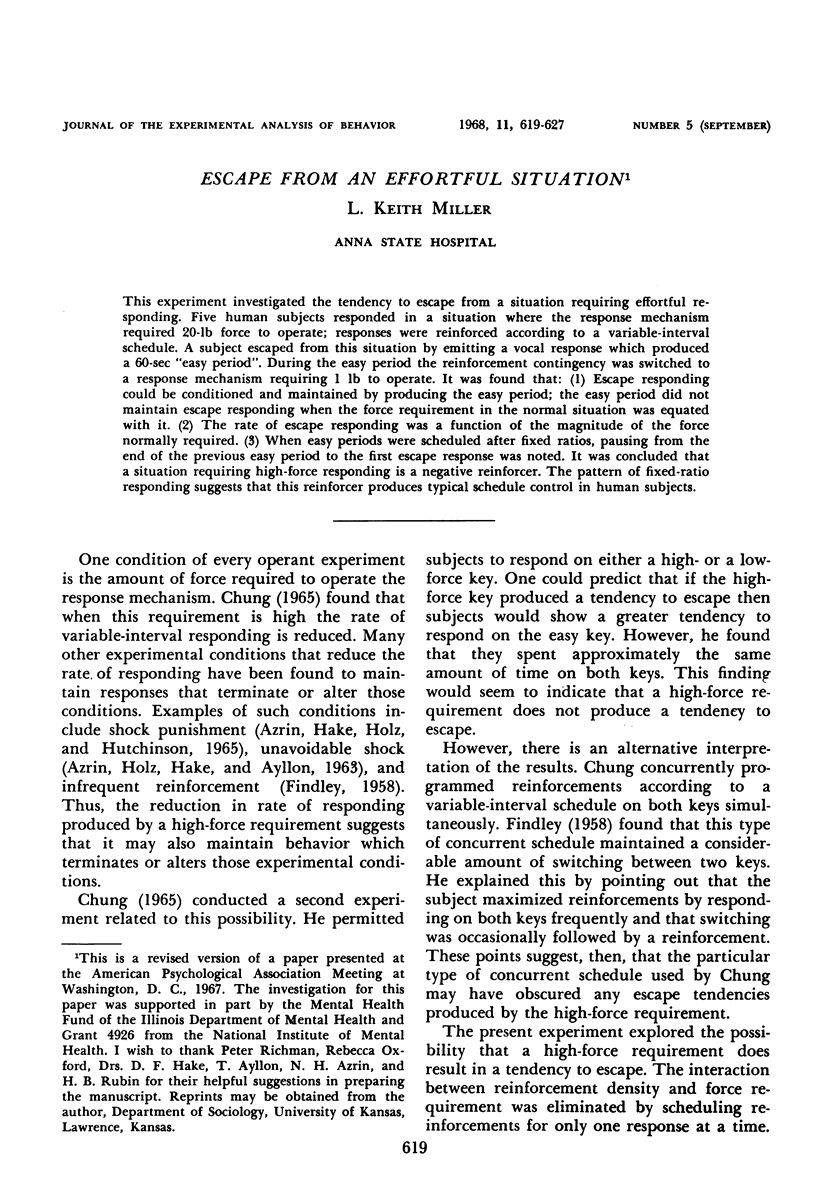
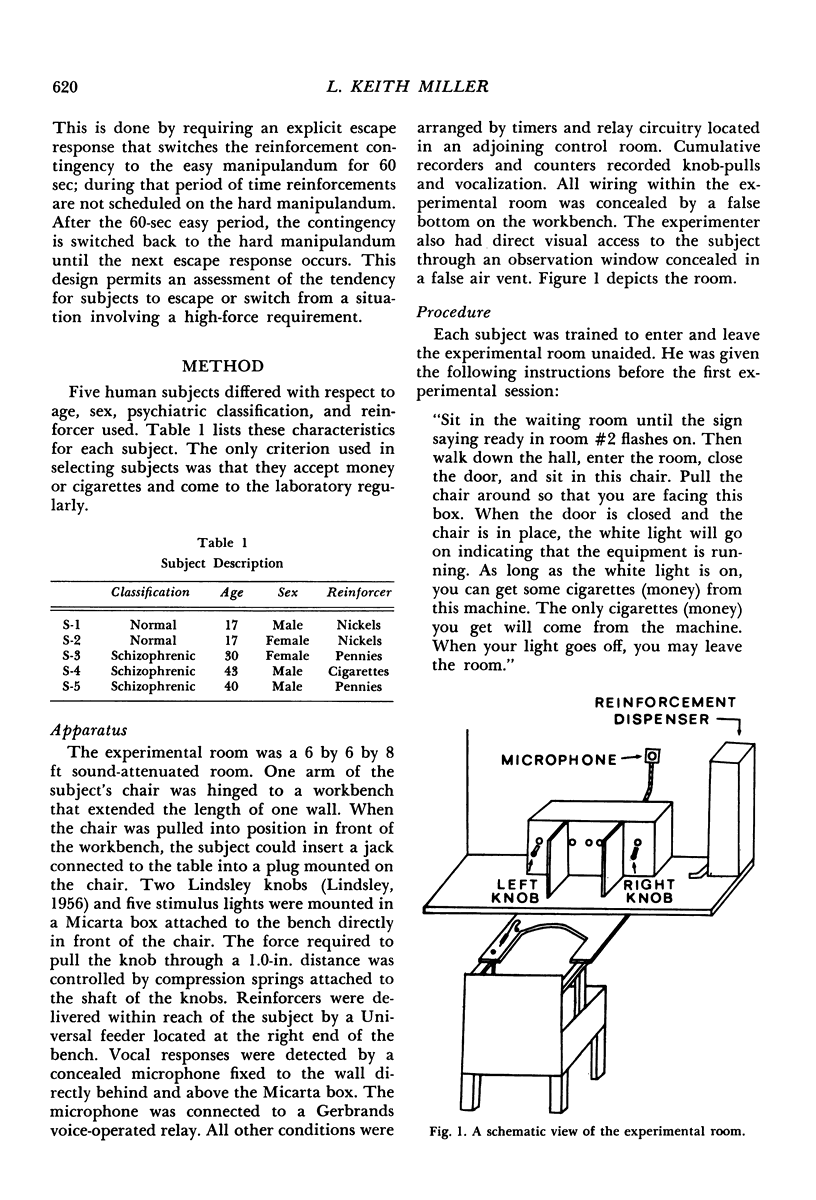
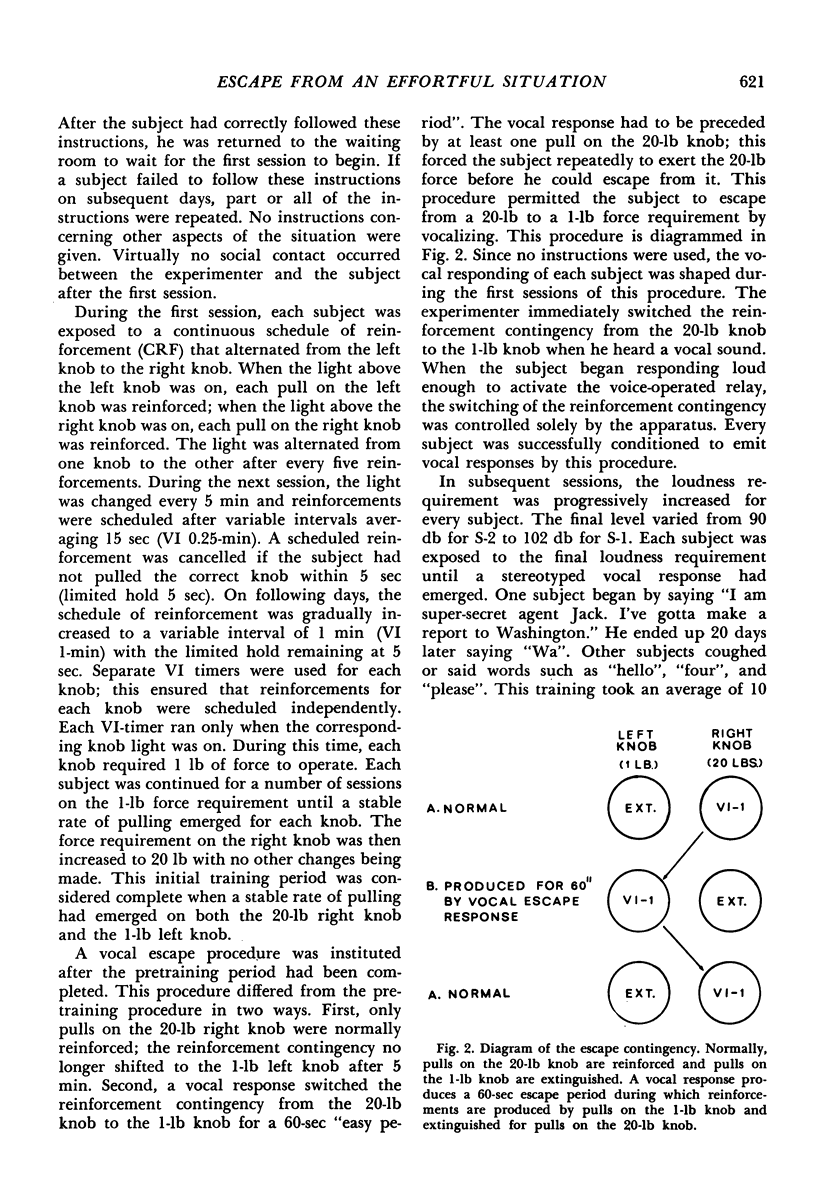

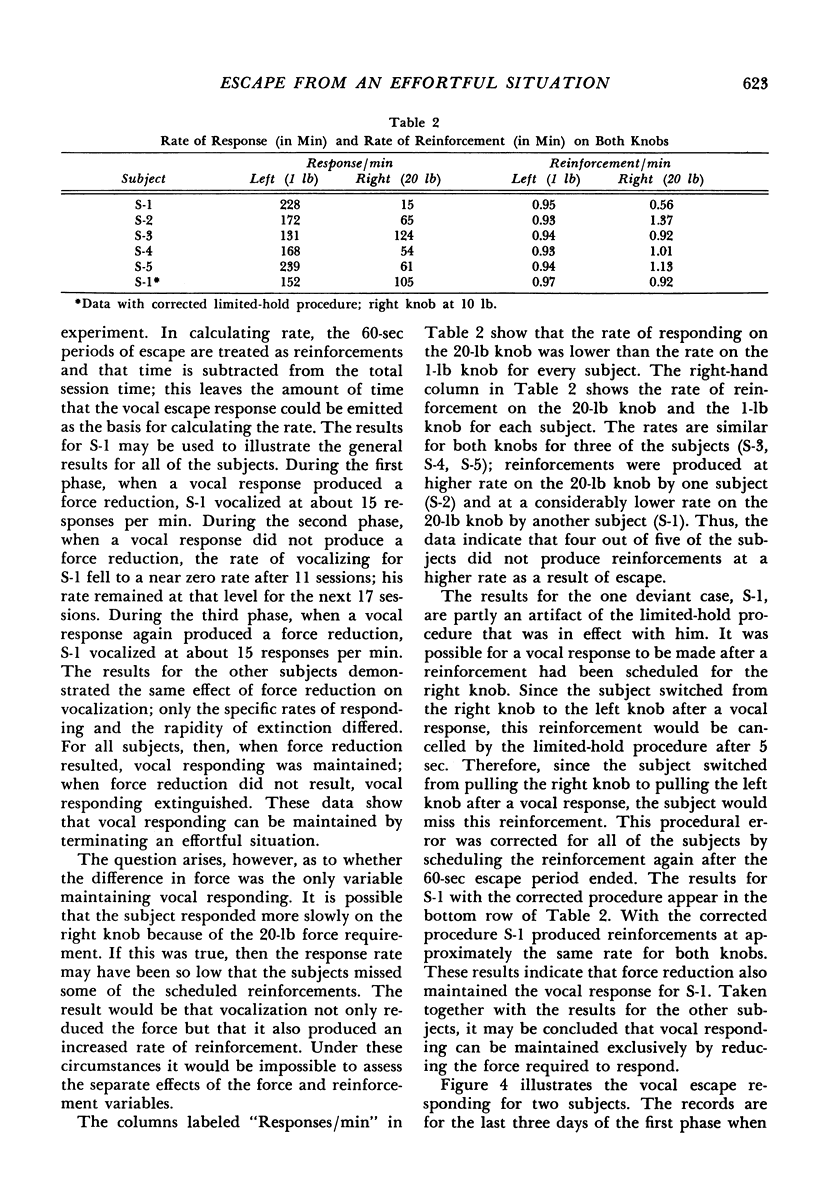
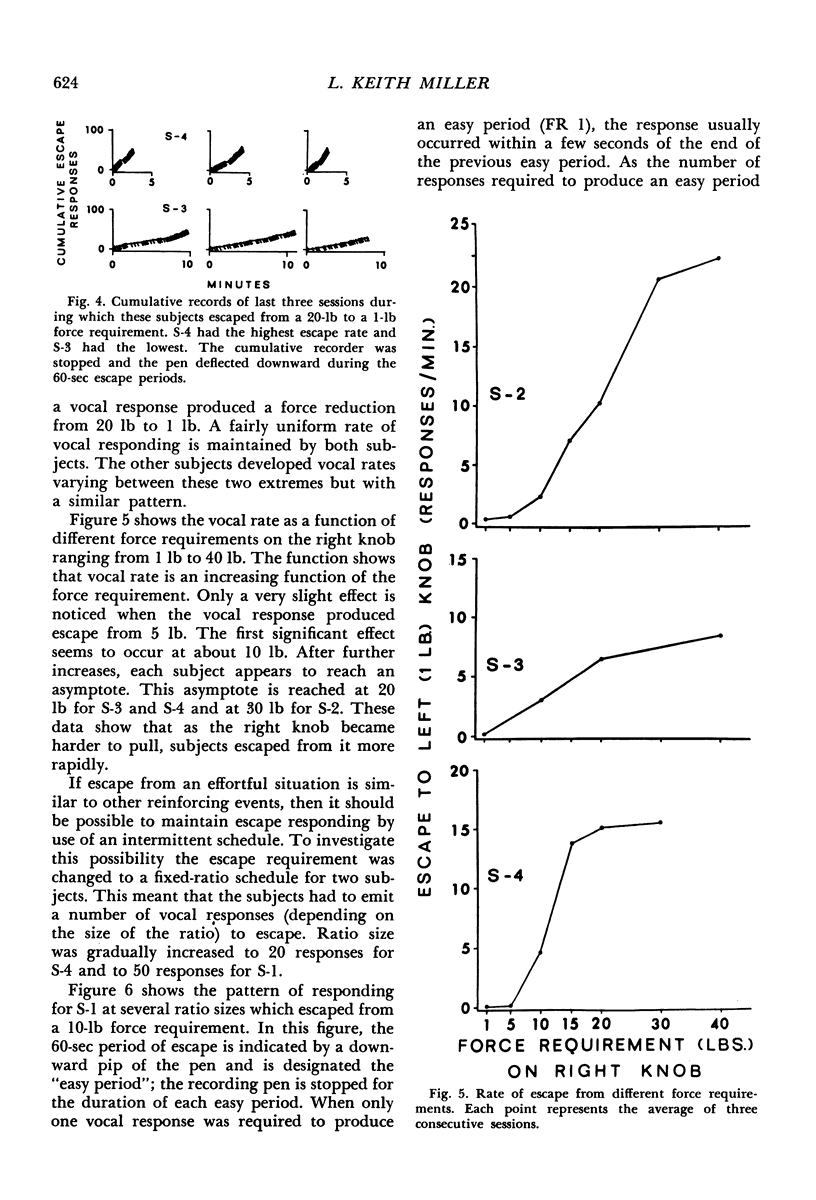
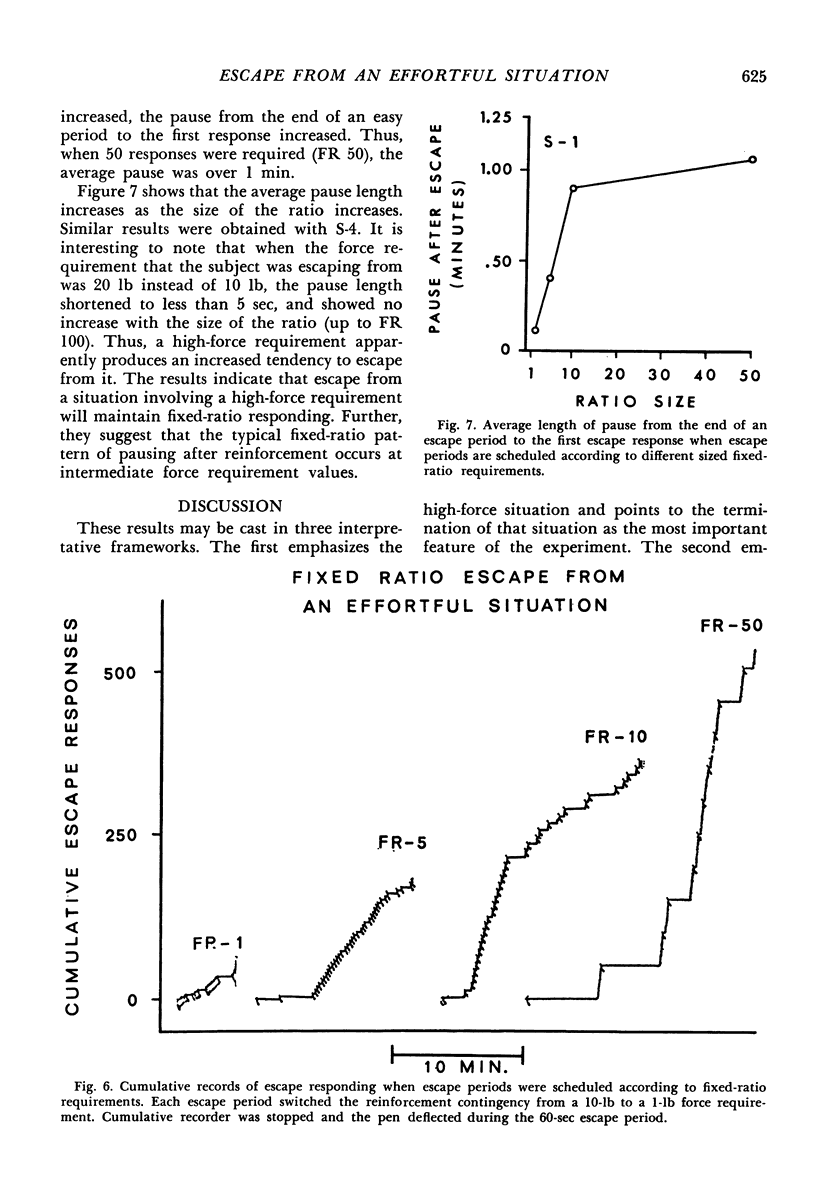
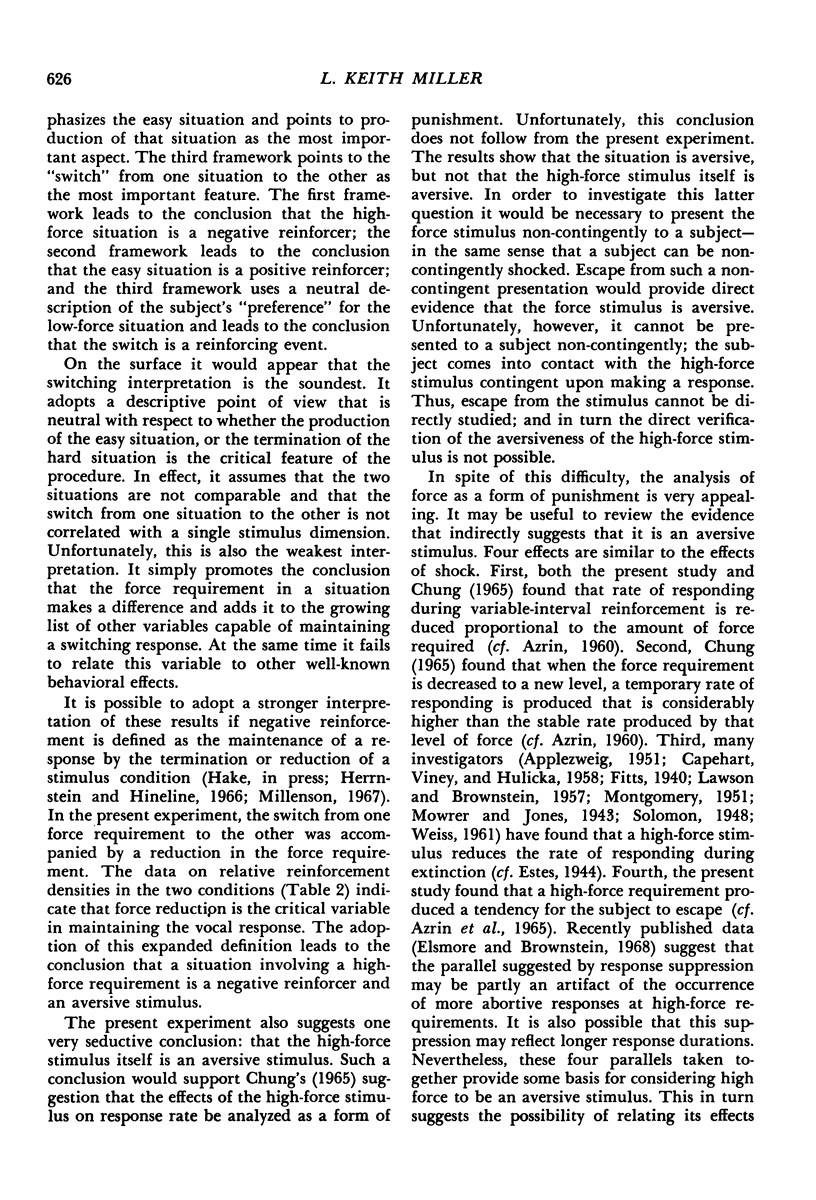

Selected References
These references are in PubMed. This may not be the complete list of references from this article.
- APPLEZWEIG M. H. Response potential as a function of effort. J Comp Physiol Psychol. 1951 Jun;44(3):225–235. doi: 10.1037/h0057191. [DOI] [PubMed] [Google Scholar]
- AZRIN N. H. Effects of punishment intensity during variable-interval reinforcement. J Exp Anal Behav. 1960 Apr;3:123–142. doi: 10.1901/jeab.1960.3-123. [DOI] [PMC free article] [PubMed] [Google Scholar]
- AZRIN N. H., HAKE D. F., HOLZ W. C., HUTCHINSON R. R. MOTIVATIONAL ASPECTS OF ESCAPE FROM PUNISHMENT. J Exp Anal Behav. 1965 Jan;8:31–44. doi: 10.1901/jeab.1965.8-31. [DOI] [PMC free article] [PubMed] [Google Scholar]
- AZRIN N. H., HOLZ W. C., HAKE D. F., AYLLON T. Fixed-ratio escape reinforcement. J Exp Anal Behav. 1963 Jul;6:449–456. doi: 10.1901/jeab.1963.6-449. [DOI] [PMC free article] [PubMed] [Google Scholar]
- CAPEHART J., VINEY W., HULICKA I. M. The effect of effort upon extinction. J Comp Physiol Psychol. 1958 Aug;51(4):505–507. doi: 10.1037/h0045753. [DOI] [PubMed] [Google Scholar]
- CHUNG S. H. EFFECTS OF EFFORT ON RESPONSE RATE. J Exp Anal Behav. 1965 Jan;8:1–7. doi: 10.1901/jeab.1965.8-1. [DOI] [PMC free article] [PubMed] [Google Scholar]
- Findley J. D. Preference and Switching under Concurrent Scheduling. J Exp Anal Behav. 1958 Apr;1(2):123–144. doi: 10.1901/jeab.1958.1-123. [DOI] [PMC free article] [PubMed] [Google Scholar]
- HOLLAND J. G. Human vigilance: the rate of observing an instrument is controlled by the schedule of signal detections. Science. 1958 Jul 11;128(3315):61–67. doi: 10.1126/science.128.3315.61. [DOI] [PubMed] [Google Scholar]
- Hake D. F. Actual versus potential shock in making shock situations function as negative reinforcers. J Exp Anal Behav. 1968 Jul;11(4):385–403. doi: 10.1901/jeab.1968.11-385. [DOI] [PMC free article] [PubMed] [Google Scholar]
- Herrnstein R. J., Hineline P. N. Negative reinforcement as shock-frequency reduction. J Exp Anal Behav. 1966 Jul;9(4):421–430. doi: 10.1901/jeab.1966.9-421. [DOI] [PMC free article] [PubMed] [Google Scholar]
- LANE H. L., SHINKMAN P. G. Methods and findings in an analysis of a vocal operant. J Exp Anal Behav. 1963 Apr;6:179–188. doi: 10.1901/jeab.1963.6-179. [DOI] [PMC free article] [PubMed] [Google Scholar]
- LAWSON R., BROWNSTEIN A. J. The effect of effort and training-test similarity on resistance to extinction. Am J Psychol. 1957 Mar;70(1):123–125. [PubMed] [Google Scholar]
- MONTGOMERY K. C. An experimental investigation of reactive inhibition and conditioned inhibition. J Exp Psychol. 1951 Jan;41(1):39–51. doi: 10.1037/h0062574. [DOI] [PubMed] [Google Scholar]
- Shearn D., Sprague R., Rosenzweig S. A method for the analysis and control of speech rate. J Exp Anal Behav. 1961 Jul;4(3):197–201. doi: 10.1901/jeab.1961.4-197. [DOI] [PMC free article] [PubMed] [Google Scholar]
- WEINER H. RESPONSE COST EFFECTS DURING EXTINCTION FOLLOWING FIXED-INTERVAL REINFORCEMENT IN HUMANS. J Exp Anal Behav. 1964 Jul;7:333–335. doi: 10.1901/jeab.1964.7-333. [DOI] [PMC free article] [PubMed] [Google Scholar]
- WEISS R. F. Response speed, amplitude, and resistance to extinction as joint functions of work and length of behavior chain. J Exp Psychol. 1961 Mar;61:245–256. doi: 10.1037/h0047145. [DOI] [PubMed] [Google Scholar]
- Weiner H. Conditioning history and maladaptive human operant behavior. Psychol Rep. 1965 Dec;17(3):935–942. doi: 10.2466/pr0.1965.17.3.935. [DOI] [PubMed] [Google Scholar]


